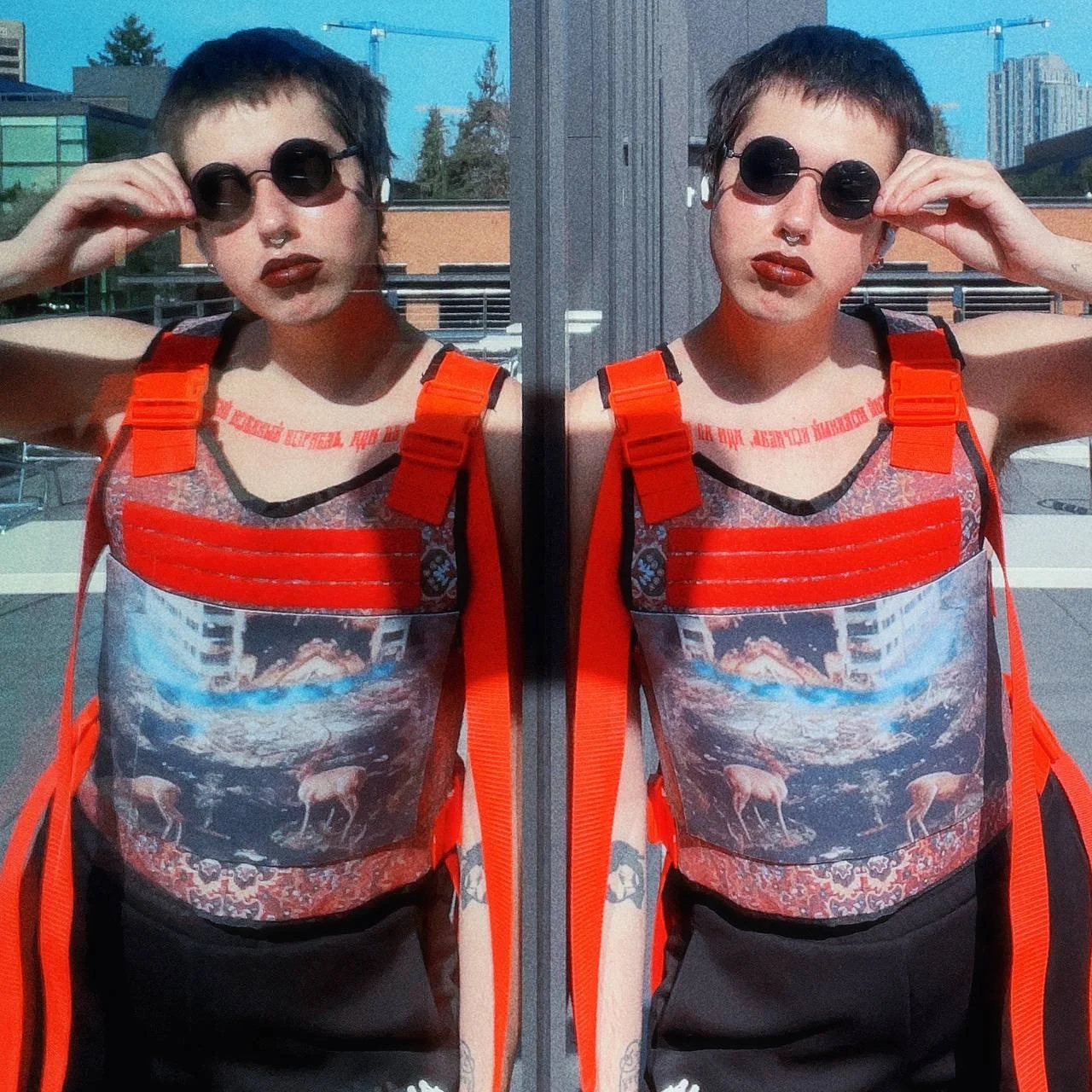Electronic Streetwear for Urban Justice by Brett A. Halperin et al.
As part of an Urban@UW Research Spark Grant, Brett Halperin worked with Afroditi Psarra, Daniela Rosner, William Rhodes, CHANNELS, and the Anti-Eviction Mapping Project (AEMP), in partnership with community organizations Washington Community Action Network, Be:Seattle, and Rolla Renters Association, to create electronic streetwear. The project features an electronic denim jacket that plays music, poems, and stories of Black residents' urban struggles but also moments of joy and successes in fights for justice. In particular, the project asks: (1) how might electronic streetwear amplify community organizing?; and (2) what might it mean to embody, wear, and feel the vibrations of audio relative to more disembodied forms of reception?
Streetwear was born with anti-consumerist, rebellious, and social justice origins in sub/urban environments as a mode of creative expression in response to experiences of oppression. Streetwear refers to staple garments like graphic tees, hoodies, sneakers, hats, and casualwear like workwear, sportswear, skatewear, and denimwear (e.g., denim jackets). The style has long had an intimate relationship with storytelling and music, namely Hip-Hop and Punk. More recently, however, corporations have appropriated streetwear by mass-producing and extracting its cultural cache from the periphery: Black, Brown, Indigenous, Jewish, queer, working-class, and counter-cultural artists. In response, this project investigates reconnecting streetwear with its material, cultural, racial, and socioeconomic origins, as well as threading more expressive and animated connections with stories, poetry, and music.
Digital design of electronic denim jacket.
The electronic denim jacket refashions the AEMP's (Dis)location Black Exodus print zine into a digital, wearable format. The material form extends the thread motif from the zine that symbolizes and threads together the distinct yet related urban experiences of Black residents in the San Francisco Bay Area. The jacket builds upon the (Dis)location series both materially and spatially as a multi-city coalition spanning sites of community partnership including the San Francisco Bay Area, Los Angeles, Seattle, St. Louis, and New York City. It foregrounds themes of place, space, and belonging, as well as aims to raise awareness for urban issues related to intersections of housing, climate, and racial (in)justice.
The back of the electronic denim jacket, containing a LilyPad MP3 microcontroller, wearable speakers, and interactive patches sewn with conductive thread to play music, poetry, and stories aloud.
The jacket contains a LilyPad MP3 microcontroller loaded with audio files, embedded wearable speakers, and interactive patches sewn with conductive thread that trigger the audio to play from the speakers when tapped upon with a metal thimble attached to a chain necklace. Some of the illustrations on the patches (by William Rhodes and Robin Bean Crane), as well as oral histories of Marie Harrison and Raymond Tompkins come directly from the zine. Other patch designs, songs, and stories extend the zine content by featuring San Francisco-based artist CHANNELS' personal story and song INFINITE, as well as St. Louis-based artist Gabrial Thompson's song We're Not Sorry. The jacket also incorporates the slam poetry of New York City-based, self-described "homeless poet" Marcus Moore. All of the audio tracks in the jacket can be listened to on a playlist here, which connects to the jacket via a QR code printed on a patch.
Model Javonne Barrett interacting with a patch on the electronic denim jacket to play a song aloud.
The jacket has publicly exhibited in the DXARTS Mechatronics Art show in Seattle, WA. It has also traveled abroad to Hamburg, Germany for a Body x Materials workshop organized by the Royal College of Art at the ACM CHI '23 Conference on Human Factors in Computing. For making this exploration possible, we warmly thank all of our aformentioned community partners whose voices comprise the jacket, as well as the AEMP (Dis)location Black Exodus team, Adrienne Hall, Alexandra Lacey, Ariana Faye Allensworth, Colby Bariel, Esteban Agosin, Mark Harris, Javonne Barrett, Jin Zhu, Joelle Craft, King Khazm, Rashell Lisowski, Rayna Abston, Sylvia Heisel, Tanya Moore, and Zack Pockrose. This study was graciously funded by an Urban@UW Research Spark Grant.






